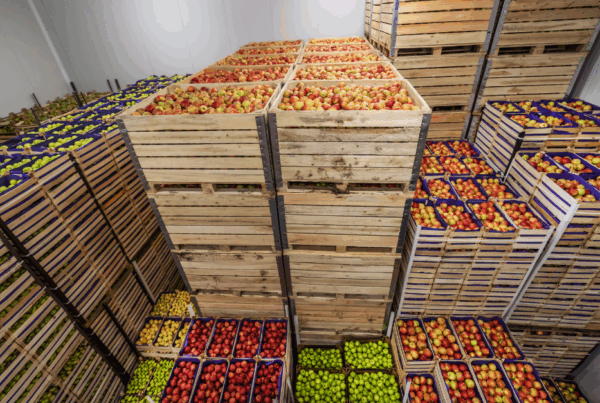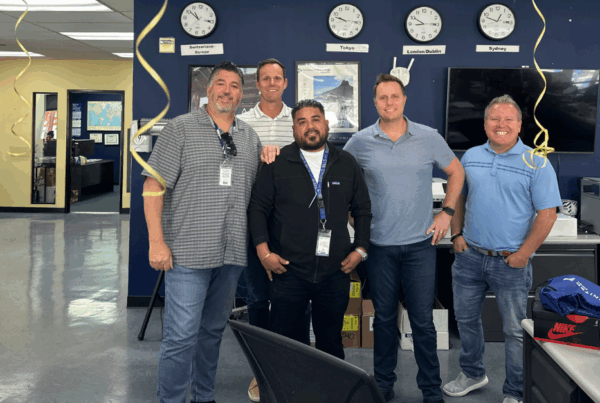In a strange twist of fate, logistics has become the hottest topic in talks across tables everywhere in the United States. There is no shortage of opinions, theories, and ideas about how it all happened, how it can be fixed, and what else can go wrong. Unfortunately, few of the theories go back to view the whole situation from a macro level. This week, we have for you a full spectrum of the come-apart happening as holiday shopping strains our industry even further. It starts around February of 2020:
- First came the Pandemic which arrived as the Chinese 301 tariffs created an equipment imbalance of containers.
- Then came the lockdown – people were forced to stay home, staring at their four walls.
- Their discretionary income, normally spent on dinners/movies, etc….now went to home décor, clothing, and outdoor furniture.
- Amazon and other online retailers’ orders spiked to a point that had never been seen before in both the European and US markets.
- At the same time, unaware of what was occurring at Amazon, the carriers blank sailed numerous vessels for fear no one would buy the inventory.
- Thus began the backlog, which began at the vessel loading in Asia and ended up stuck somewhere in the supply chain.
- With the 1st full vessels after the blank sailing, it began the slide to where we are today.
- At Asia origins such as Hong Kong, rate auctions were occurring, space going to the highest bidder. In previous “normal” years, a load of textiles from Hong Kong to New York went for $5000-$6,000/container. 3 weeks ago the rate was $32,000/40’ container.
- As more and more full vessels came into the US terminals, it quickly filled even the largest terminals, LA/LGB.
- Then there weren’t enough truckers to pick up the loads, which further exasperated the backlog at the terminals.
- As container expenses rose, reefer containers were taken for dry cargo due to the value of any box able to carry imports to the US. This drove the price of reefer containers up exponentially.
- Once cargo began to move off of the terminals, the warehouses became full, as did the rails moving into the hinterland.
- Once the warehouse and the rails became so full they became dysfunctional, the rail would have to stop operations for weeks to get caught up only – further causing a backlog at the terminals and warehouses.
- Vessels were now stuck waiting and drifting for a berth to open in all major west and east coast ports.
- Enter Peak Season Start (PSS). PSS usually beings in the summer and ends in November. The PSS is highlighted by increased liftings as cargo is moved into place for the swell of people’s holiday shopping.
- The PSS began this year (2021) just as LA/LGB finally got control of the drifting vessels and brought their number down to a manageable level.
- The PSS came, and LA/LGB now has 45 vessels, sometimes as high as 75 vessels waiting to berth. There is no terminal space, no additional truckers, no more warehouse storage, no more rail cars to move this additional cargo.
- Then came the US Government. They have recently imposed a fee for import containers left on the dock for more than 8-10 days depending on the carrier.
- While in theory, this would appear fine, there are no more trucks to move the imports that have been buried under other containers, no more warehouse space, etc.
The crux of the issue is and continues to be the lack of upgrades to the US port and transportation infrastructure. The terminals are too small and antiquated. This is due in large part to the ILWU Union resisting technology on the terminals, as it limits union jobs. The US needs to upgrade the terminals while negotiating with the unions to advance the technology in the terminals, expand warehousing, invest in truckers, and work more closely with the rail to expand their business.
The carriers also need to be part of the solution, as they were responsible for bringing larger and larger vessels into terminals that were unprepared to handle the capacity. They need to invest with the terminals to determine the vessel size that can optimize the surrounding support system for warehousing, trucking, and rail access.
While the rest of the world’s ports saw much of the same problems on a much smaller scale, the question remains: can they recover faster than our nation? With decades of experience in the ocean department, CFI is working diligently to mitigate the issues our clients face during the disruption. We’re putting our knowledge to work on behalf of perishables shippers who are critically trying to ensure the world food supply remains stable in the face of shipping disruptions. If you need an educated advocate to work with during these unprecedented times, contact your CFI representative today.



